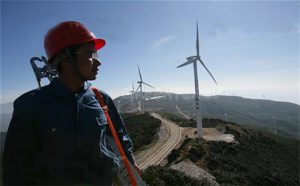The latest reports from the Intergovernmental Panel on Climate Change (IPCC), released in April, suggest the opportunities left to keep the global temperature rise under 2℃ are now extremely limited. For that to happen, global emissions must peak before 2030 and fall to almost zero by the year 2100.
Every country must take on onerous emissions cuts, with enormous and far-reaching effects on their long-term social and economic development. Developed nations must speed up emissions reduction, while developing countries must do as much as they can to control emissions growth – and reach peak emissions as quickly as possible.
China is now the key player in the negotiations. It has no choice: in the past, it was able to benefit from a world in which the US was the largest emitter and a passive player in climate negotiations, seen as a saboteur of the talks. China joined with developing countries and made use of US inaction, quashing demands from the international community to sign up to stricter emissions targets. But in the new round of negotiations, the US position has eased, while China faces unprecedented international pressure.
China’s CO2 emissions were 9.9 billion tonnes in 2012, or about 29% of the global total, according to the Netherlands Environmental Assessment Agency. That’s almost as much as the US and EU share combined. New emissions from China that year accounted for around two thirds of the global growth in emissions. US emissions meanwhile reached only 5.2 billion tonnes, or about 16% of the global total. The explosive growth of shale gas and the development and use of renewable energy in the US has also eased pressure on its government over long-term emissions reduction.
Conversely, the international community is now focused on when China’s emissions will peak. Many believe this must happen imminently – before 2025, or even 2020 – for the world to keep the global mean temperature rise under 2℃. And according to the International Energy Agency (IEA), China’s CO2 emissions in 2050 must be about half what they were in 2009 to meet this target. China tentatively acknowledges this. Li Wei, director of the State Council’s Development Research Centre suggested in a People’s Daily article that China’s carbon dioxide emissions should peak around 2030.
China may be under great pressure, but it can still stand up for itself. Certain principles enshrined in the United Nations Framework Convention on Climate Change, such as “common but differentiated responsibilities” – the idea that rich countries should bear a greater share of the burden of tackling climate change than poor countries – need to be reaffirmed, and unreasonable demands from the developed world firmly resisted.
But China needs to accept that there have been major changes to the domestic and international context. To transform its development path and deal with serious pollution problems such as smog, China has made tackling climate change a strategic priority. Encouraging the transformation to low-carbon development has become a national objective; and the trend is gradually moving from targeting emissions intensity to targeting total emissions.
What China needs to do now is to find a way of handling the pressure from the international community while moving as quickly as possible to a low-carbon economy; to make clear the links between its moves towards a greener society and international negotiations; to seek a balance between global interests and Chinese interests; and to become an important force in driving forward the international climate negotiations.







